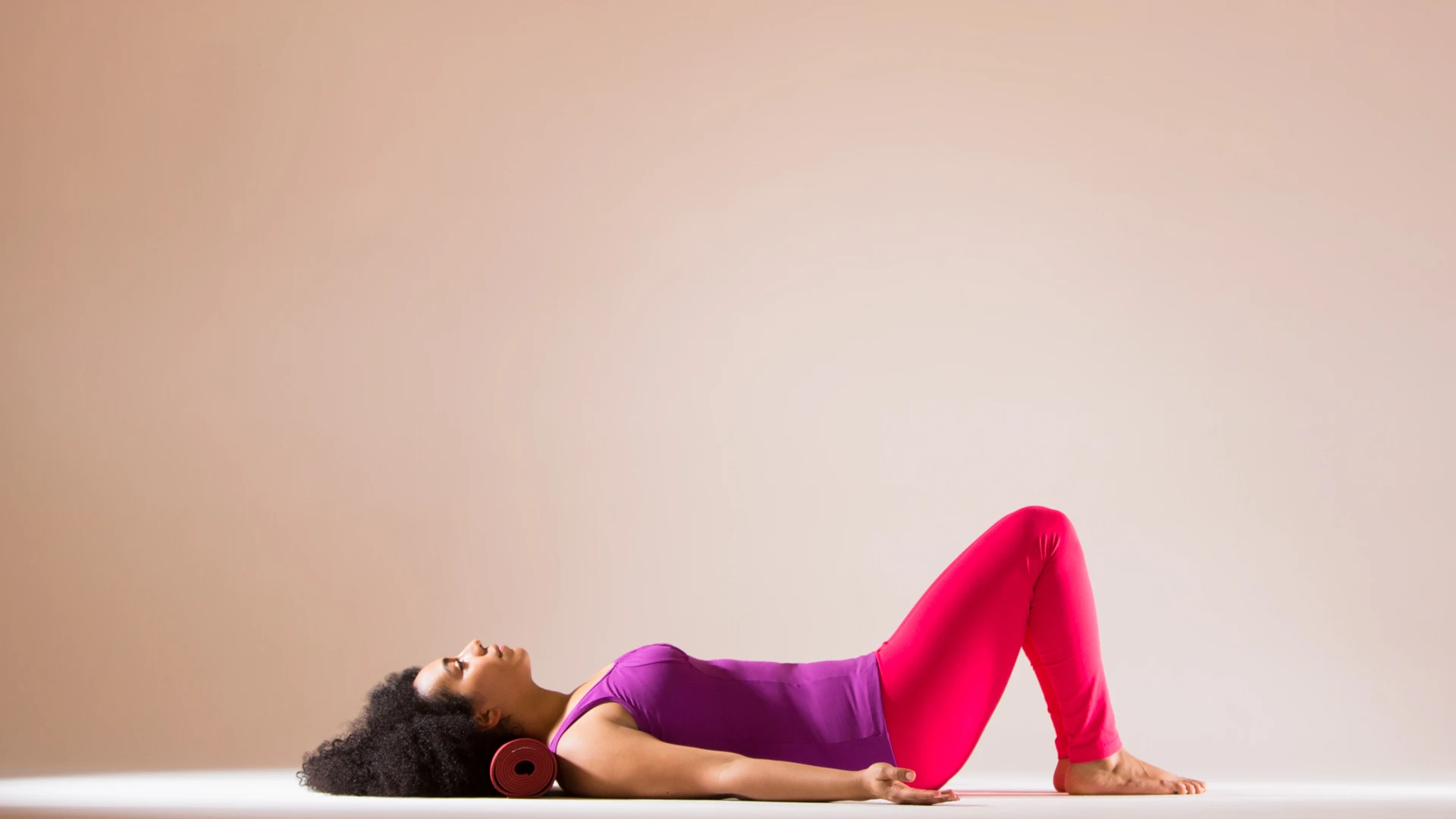If you’re like most of us, you’ve probably been told to “just rest” after an injury or during recovery—but what if how you rest actually matters more than you think? The constructive rest position isn’t just laying around; it’s a simple, intentional technique that can make a big difference in how your body resets, realigns, and recharges.
At TruStrength, we talk a lot about smarter recovery—not just working hard, but recovering with purpose. So if you’re dealing with chronic tension, lower back pain, stiffness, or even stress, understanding how the constructive rest position works could be a total game-changer.
What is the Constructive Rest Position
At its core, the constructive rest position (CRP) is all about letting gravity do the work. You lie on your back with your knees bent and feet flat on the floor—typically hip-width apart—and let your muscles release tension without collapsing into poor posture.
It might sound basic, but there’s real science behind it. This position helps:
- Reduce unnecessary muscular holding patterns
- Rebalance your spine and pelvis
- Improve breathing mechanics
- Calm your nervous system
Anatomically, when you’re in CRP, your spine is supported in its natural curves. Your psoas (deep hip flexor) muscles can relax, and your diaphragm has more space to expand. It’s especially helpful for people whose posture or movement patterns have been affected by chronic tension, injury, or simply bad habits from hours at a desk.
Common Reasons You Might Need Constructive Rest
Let’s break down a few situations where CRP is not just helpful—it’s essential.
1. Injury Recovery
After a strain or sprain (especially in the lower back, hips, or neck), your body goes into a kind of protection mode. That often looks like tight, overworked muscles trying to stabilize the area. CRP gives your body a safe, neutral position to let go of that extra tension without creating more stress elsewhere.
2. Poor Posture or Sedentary Habits
If you sit most of the day, your hips tighten, your shoulders round forward, and your spine shifts out of alignment. Constructive rest acts like a reset button, giving your body a chance to find its way back to neutral.
3. Structural Issues
Issues like scoliosis, pelvic imbalances, or flat feet often lead to compensatory tension patterns. CRP helps you become more aware of these patterns and gently unwind them without forcing change.
4. Stress & Nervous System Overload
This one’s big: your nervous system plays a huge role in muscle tension. When you’re stressed, your body responds physically—tight shoulders, shallow breathing, clenched jaws. CRP helps activate the parasympathetic nervous system (your “rest and digest” mode), which encourages full-body relaxation and recovery.
5. Chronic Pain or Muscle Holding
If you’ve dealt with pain for a while, your body often develops protective movement patterns—what we call “bracing.” These patterns become automatic and, over time, create more discomfort. CRP can interrupt that cycle by giving your muscles a chance to literally let go.
How to Know If You Should Try It
Before diving into any recovery position, it’s important to understand what your body is trying to tell you.
Try This Self-Assessment:
- Do you experience consistent lower back tightness after standing or walking?
- Do you feel like your hip flexors are always “on”?
- Do you catch yourself clenching your glutes or stomach throughout the day?
- Do you feel stiffness in your mid-back or neck that doesn’t go away with stretching?
If you answered yes to most of these, CRP might help you reset.
When to Seek Professional Evaluation:
There are times when rest isn’t enough, and you should get help from a pro—especially if you’re dealing with:
- Radiating nerve pain
- Numbness or tingling in limbs
- Muscle weakness
- Sudden sharp or shooting pain
- Pain that wakes you up at night
At TruStrength, we help you figure out if what you’re feeling is just tightness—or something deeper that needs real rehab.
Using the Constructive Rest Position as Part of Recovery
Here’s the thing: CRP isn’t a “one-and-done” fix. But when used intentionally and consistently, it becomes a powerful tool in your recovery toolbox.
Home Use Tips
- Set up: Lie on your back on a yoga mat or carpeted floor. Bend your knees, feet flat on the floor about hip-width apart.
- Support: If needed, place a small towel under your head so your neck feels neutral.
- Time it: Start with 5–10 minutes. Use this time to notice your breath, where you’re holding tension, and what begins to let go.
- Don’t force: You’re not trying to stretch or push. The whole point is to do nothing—let your body settle.
Many people find that doing this at the end of the day, or after a workout, creates noticeable changes in how they move and feel.
Medical & Therapeutic Use
CRP is often used as part of somatic therapy, Alexander Technique, and physical therapy. At TruStrength, we use it with clients recovering from:
- Back injuries
- Postural imbalances
- Core dysfunctions
- Pelvic instability
- Stress-related muscle pain
We’ll often pair CRP with guided breathing techniques, gentle pelvic tilts, or diaphragmatic release work to really maximize the benefits. And if it’s not the right tool for your specific condition, we’ll make sure to customize your recovery game plan with something that is.
Preventive Use: Make It Part of Your Routine
You don’t have to wait until something hurts to start using CRP. Think of it as prehab—your body’s way of hitting the pause button before patterns get worse.
Some preventative tips:
- Use CRP after long travel days or desk-heavy work hours.
- Do it before sleep to down-regulate your nervous system.
- Pair it with breathwork or mindfulness exercises for deeper benefits.
- Combine it with mobility work like gentle hip or thoracic spine exercises.
Even 5–10 minutes a few times a week can make a difference in posture, awareness, and overall tension levels.
Ready to Reset Your Body with TruStrength?
Your body knows how to heal—you just have to give it the right environment to do so. The constructive rest position is simple but powerful. At TruStrength, we help clients figure out exactly when and how to use tools like CRP to support real, long-lasting recovery.
Let’s help your body rest—and recover—smarter. Schedule your appointment now at TruStrength and start feeling better from the inside out.



